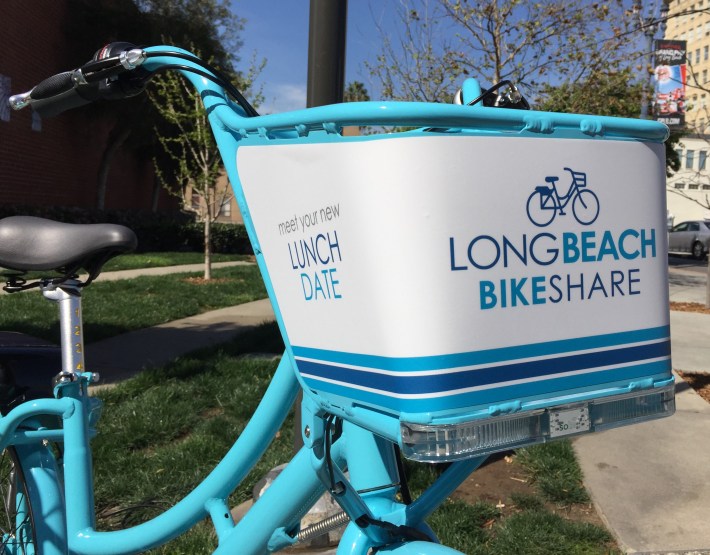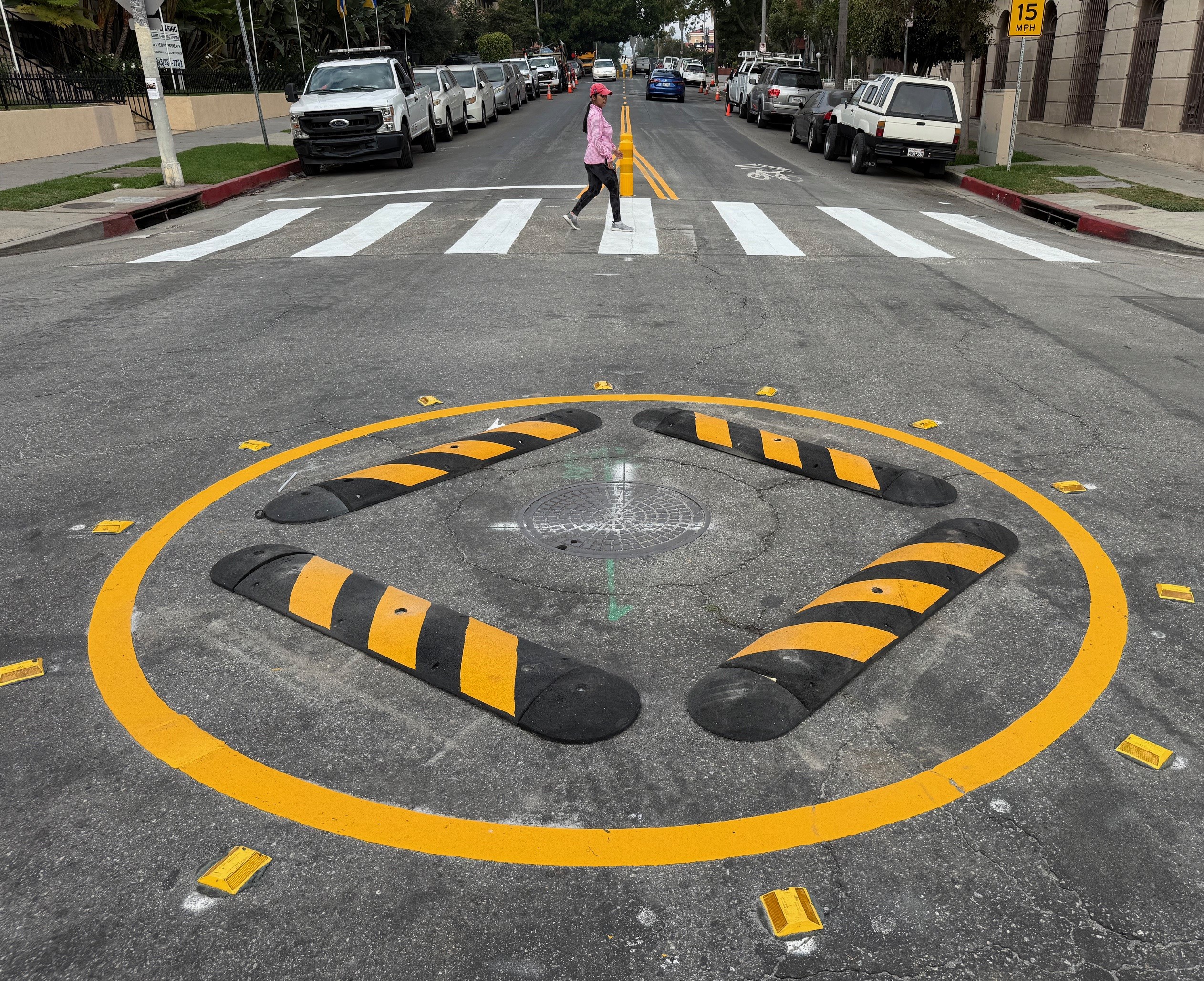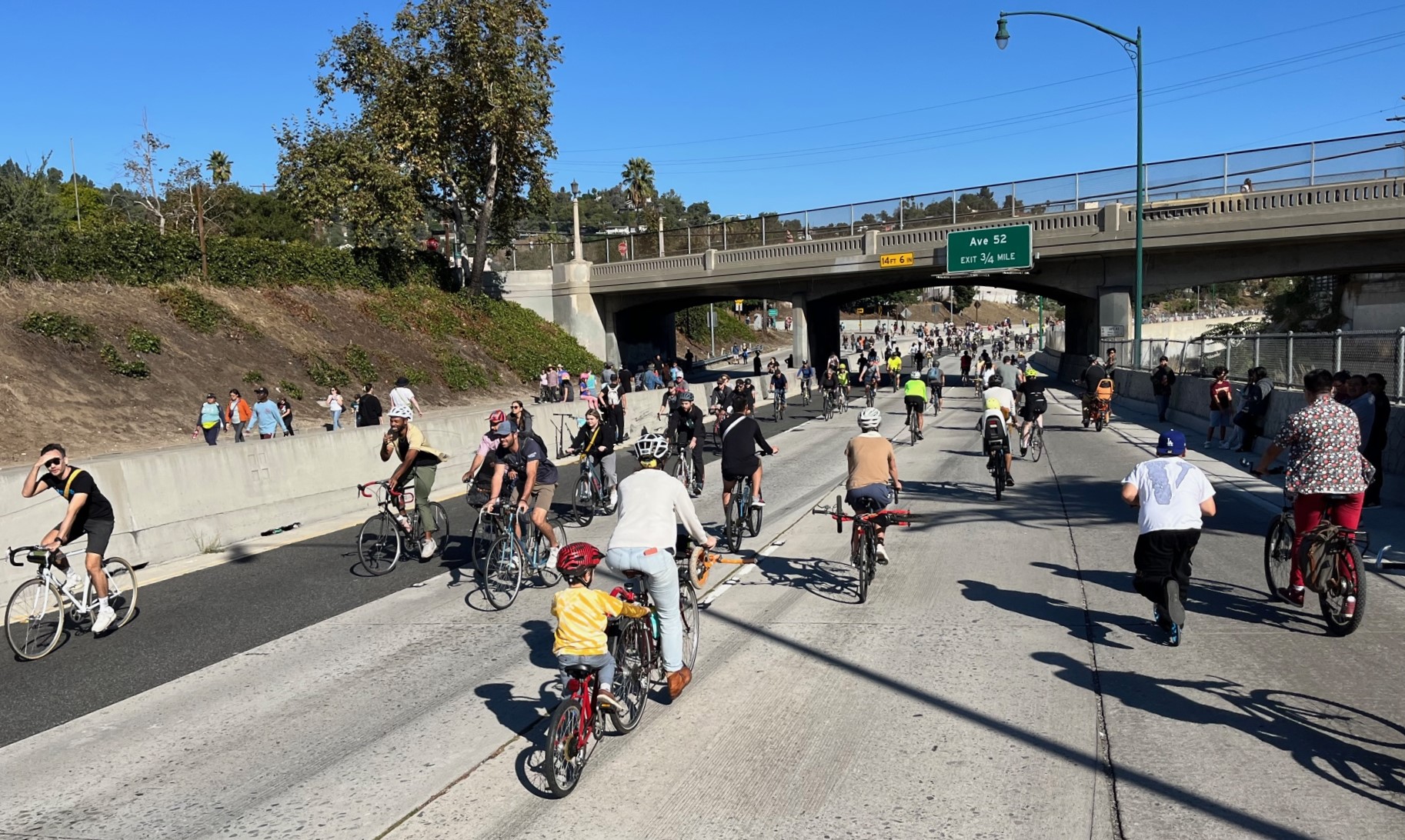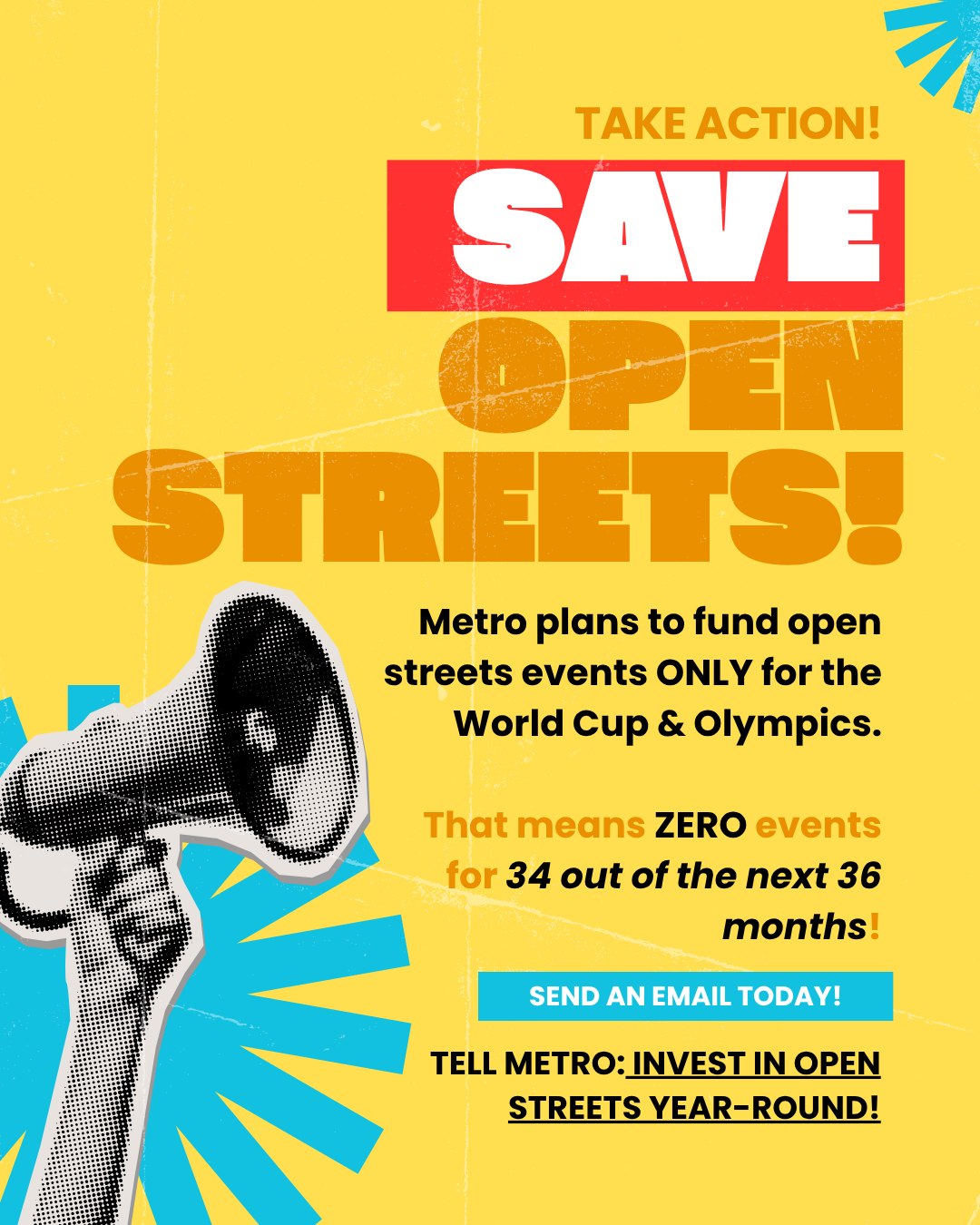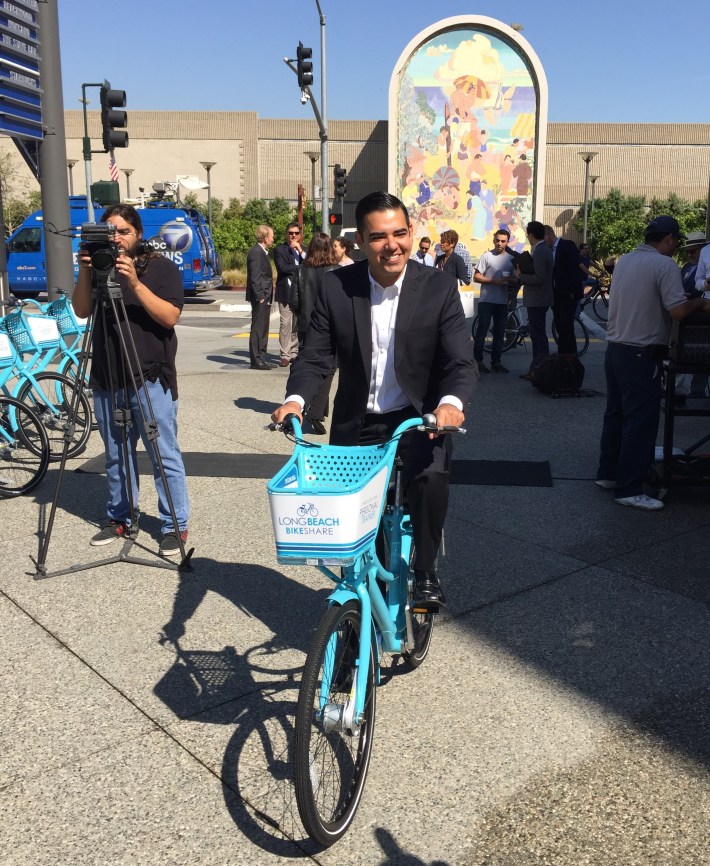
At a kick-off event this morning, the city of Long Beach celebrated a soft launch of its new bike-share system, called Long Beach Bike Share. There are currently two stations in operation, with a dozen bikes. The system will fully publicly open at the Saturday March 19 Beach Streets open streets event.
The 4-mile March 19 Beach Streets will be the first open streets event in downtown Long Beach, extending eastward through Belmont Heights. The route [PDF] is primarily along Broadway, with spurs on Pine Avenue and Cherry Avenue. Beach Streets is looking for volunteers.
Long Beach Bike Share currently has two hubs installed: one at City Hall, the other on Third Street at the Promenade.
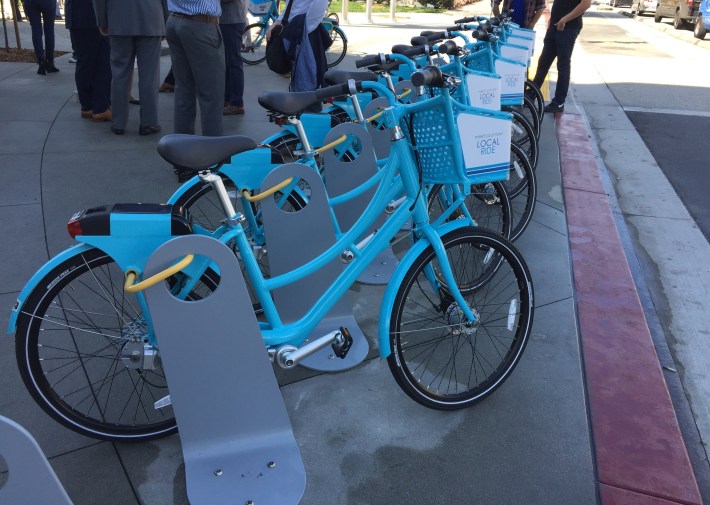
By March 19, the bike-share system will have 100 bicycles available; this will expand to 500 bikes at 50 stations this summer. The service area covers roughly the southern half of the city of Long Beach - from the L.A. River to the San Gabriel River, between the Pacific Ocean and Pacific Coast Highway/Stearns Street.

The bike-share system is a smart-bike system, very similar to (using the same Cyclehop vendor as) Santa Monica's Breeze bike-share. The bikes are similar to Santa Monica, though the Long Beach bikes are powder blue. Both have 8 speeds.
The system was funded by Metro, with a local match coming from the city. Long Beach and Cyclehop are still working to secure potential advertising sponsors.
